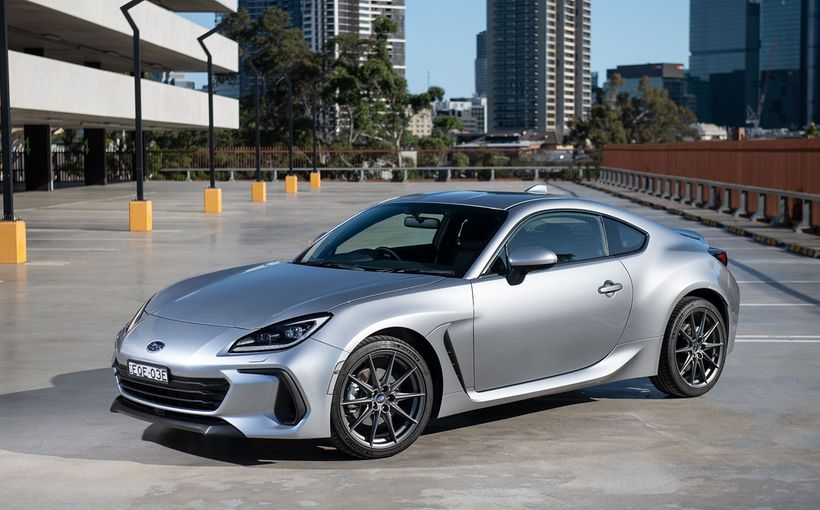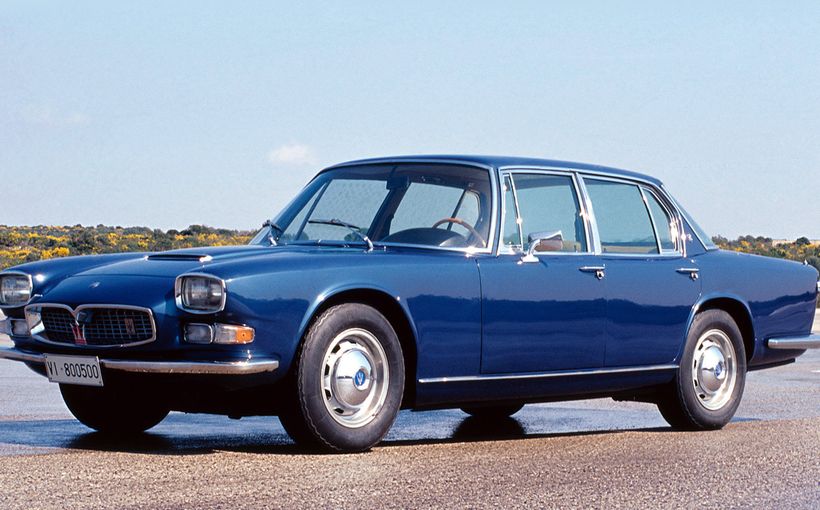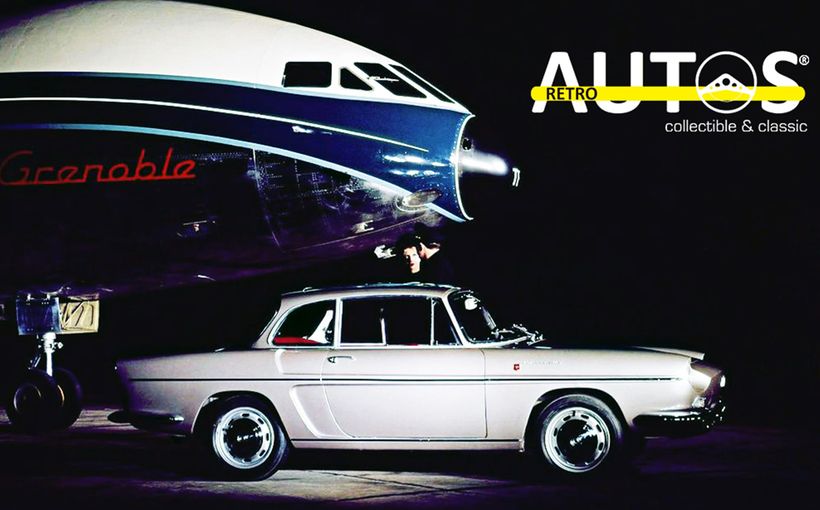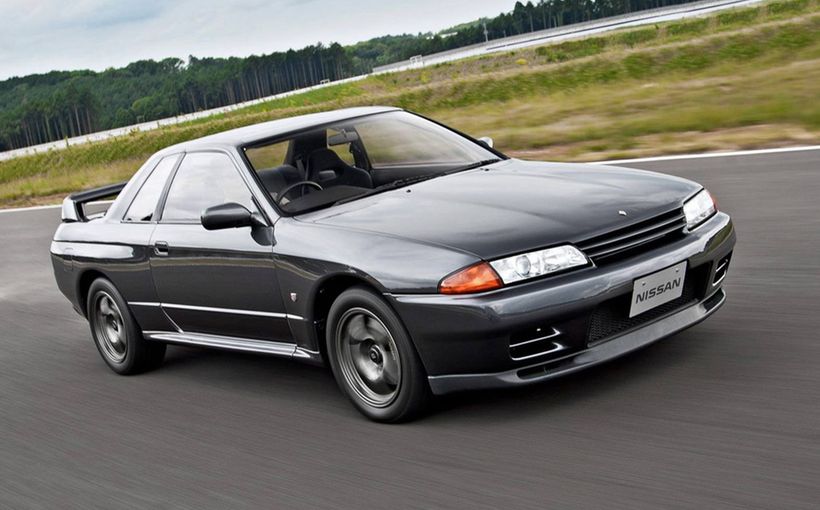The Frankly Finer Fiat 124 Sport Coupe

Until the arrival of the 124 Sport Coupe in 1967 Fiat was always regarded as the poor relation to Alfa Romeo. With its all-alloy twin overhead camshaft 1.4-litre engine, this gorgeous new coupe drove the marque into new territory. While Alfa had made DOHC engines almost its standard fare since the early 1950s, this was the first Fiat engine of its type. The inclusion of an oh-so-sweet-shiftin’ five-speed gearbox was another factor in making the 124 Sport Coupe one of the famous Italian company’s two most memorable designs in the 22 years since the end of World War Two.
The name was something of a surprise. It seems probable that Fiat was capitalising on the phenomenal sales success of its 124 sedan which was international car of the year for 1966. Yes, the coupe shared the floorpan and much of its componentry with the sedan but it was more advanced in technical specification and delivered far superior performance.

Interestingly, the DOHC engine was essentially a reworked edition of the 124 sedan’s overhead valve unit.
Fiat employed Mario Boano to style the 124 Sport Coupe. And what were his credentials? He was the man who designed the bodywork for the Ferrari 250 GT ‘Boano’. Boano took over responsibility for Centro Stile Fiat. These days we tend to refer to this car as the 124 Coupe but it was never officially called that. Indeed, Boano’s three-box notchback design makes it almost a two-door sedan in the idiom of the slightly older BMW 2002. But it is the steeper rake of the C-pillars which qualify it to earn the title ‘coupe’.

By contrast the 124 sedan was emphatically a boxy three-boxer, owing more to the earlier 1100 and 1500 sedans than the 2300 Coupe, which happens to be the other most memorable Fiat design of the era, an utterly gorgeous design which could only have been Italian. Smooth the 124 sedan was, beautiful it wasn’t. But you’d drive a long way to find anyone to question the beauty of its Sport Coupe sibling, especially in the original AC guise.
The AC was introduced to the Australian market a few months earlier than the 125 sedan. I don’t think anyone could have been more fascinated than your scribe, who at the time was the proud 18 year-old owner of a 1960 Fiat 1100 103D. I’d get my little car serviced at Willys Motors in South Melbourne and I almost passed out with excitement when I saw the 124 Sport Coupes and 125s present there in numbers. They gave a real allure to the Fiat brand. The theme of the era was ‘Fiats are Frankly Finer’.

t was big news that these twin cam gems were the world’s first with the camshafts driven by toothed rubber belts rather than chains. How advanced was that? This was when Australian cars all used cast iron blocks with cast iron heads. In 1968 a three-speed manual gearbox with no synchromesh on first and manipulated by a willowy column shift was the norm for three-pedal Aussie manual cars. Imagine comparing the newly released Holden HK Kingswood with the 125 or the four-cylinder Torana with the 124 Sport Coupe!
Aurelio Lampredi, who designed the engine, had a distinguished pedigree. Before World War Two he worked at Isotta Fraschini and then joined Reggiane where he designed aero engines. In 1946 he went to work for Enzo Ferrari and extended his fame by creating to so-called ‘Lampredi engine’, a V12 used in the 1950s in the 275S, 340 F1 and 375 F1 race cars. Then he went to Fiat. Lampredi designed the lovely 1.5-litre engine that made the Fiat 1500 such a firecracker for the early 1960s. Indeed, the 125 had a tough job living up to the 1500’s reputation as a hotshot four.
Of course, I was already in awe of the 1500 before the 125 appeared. The first of these new sedans I remember seeing was a particularly appealing and Italianate blue, and bore the registration number JXW 622; some things you don’t forget when you’re a car tragic! Whenever I entered Willys Motors service department, it was as if I had left Melbourne and stepped into the future of motoring. Needless to say, my little two-toned 1100 felt like the really poor relation but what a blessing to know that this modest machine with its suicide front doors shared its brand with the 125 and 124 Sport Coupe at the swinging end of the 1960s. (Nineteen sixty-eight and 1969 were two of the greatest years of change in the international automotive industry: think DOHC Fiats, Jaguar XJ6, Falcon GTHO, Holden Monaro, Renault 16TS, Mazda R100, BMW 2500 and 2800.)

Despite its smaller capacity engine, the 124 Sport Coupe offered slightly superior performance to the 125, largely due to an extra gear ratio. Most of this difference was in top speed. In 1975 I bought a yellow 125 sedan. I explored its potential on the Newell Highway on a quiet stretch towards the top of New South Wales, noting that at 5000rpm the speedo was indicating 82 miles per hour which was a true 78 (timed against the mile posts). That meant that at the 6250rpm redline it would be doing 97-point-something; to get beyond the ‘ton’, it would be necessary to leave the tacho’s yellow zone and enter the red.
So the Fiat 125 had a true ‘power’ top gear which was very much the Italian style. By contrast, the 124 Sport Coupe boasted a top speed of 106 in its overdriven fifth gear. It also developed identical maximum power of 66kW but at a higher 6500rpm. This smaller engine could not match the torque of the 1.6 but it took the lighter coupe from zero to 100km/h in 12.2 seconds, compared with the 125’s 12.5. Australians reared on torquey sixpacks might not always – or readily – have acquired a taste for the 1.4-litre AC model.

The 1608cc unit was used in the second edition of the 124 Sport, officially designated the BC but more commonly known as the twin-headlight model. The BC went on sale in Australia in 1970. For this application the twin overhead cam engine was equipped with dual side-draught carburettors. Maximum power was up to 110bhp. But in the interests of improved ride comfort (and perhaps reduced manufacturing cost!), the Sport lost the rear anti-sway bar. The result was a softer car. In the words of Steve Cropley, testing the 1.8-litre CC model in the February 1974 edition of Wheels magazine: ‘...severe understeer, soft ride, quite marked body roll and over-servoed brakes became distinguishing features.’
For the sports car purist, then, either the original AC model or the last-of-series CC is the 124 Sport of first choice, depending on taste. I have never driven either an AC or a BC but I am well familiar with the CC, having spent hundreds of km in the passenger’s seat and even more in the driver’s seat many years later when I bought my own. My best friend owned two or three CCs and the one I spent the most time in was a Tomato example (truly, that was the name of its orangey-red livery). Another friend bought a bronze one brand new and it was amazingly cool in 1974.

One remarkable aspect of the 124 Sport Coupe was how well it combined the role of dedicated sports car and family hack. It had good room in the rear and a huge boot.
The CC arrived locally just as the revalued Aussie dollar brought prices of imported cars down. At $4560 it was actually $150 less expensive than its predecessor. During the four years since the BC’s arrival, the price of a Holden Kingswood had climbed from $2488 to $3135.
Like the AC, the CC had just the one dual-throat Weber and made 118bhp. Zero to 100km/h took 9.5 seconds, meaning it was not just quicker than the 1.4-litre car but offered a different level of performance. The first Sport Coupe had an 18-second quarter mile in its sights but the CC did 17 flat. In doesn’t sound that much if you say it quickly, but a second over the quarter mile is huge. The 1.8-litre engine which also delivered good mid-range torque moved the 124 Sport Coupe towards the higher ranks of performance cars available in Australia. To get better acceleration in a V8 Holden you needed a 308 with manual transmission. Among Europeans, you would have to choose a Jaguar E-Type V12 at $11,282 or a Porsche 911S (a cool $15,342) to go much harder. And although the Mazda RX-2 and RX-4 had similar performance, they offered nowhere near the dynamics or driver satisfaction.

Interestingly, as well as throwing in a reference to Holden and Ford V8s, Steve Cropley compared the Fiat with the Renault 15/17. The French coupes rode better, he reckoned, and might be better for high speed cruising. But their build quality was nowhere near the Fiat’s. Neither was their performance, but he didn’t stress this point. Really, in 1974 the Fiat 124 CC Sport Coupe had no direct rival. And to realise that its 1.8-litre DOHC engine was a development of the 124 sedan’s 1.2-litre OHV unit is little short of staggering: that’s development. And it would finish up at 2.0 litres, a capacity seen in the Fiat 132, Fiat Super Brava and Lancia Beta.
In most respects the final edition of the Fiat 124 Sport Coupe was the equal of the Alfa Romeo 105-Series GTV2000 coupe, albeit more than $2300 cheaper. There was less difference in performance than the Alfa’s additional 200cc and 32bhp implied. Both cars inflicted the typical of the time Italian long arms and short legs driving position on anyone who occupied the right-hand front seat but the best I can say about that – at a moderately tall 181cm – is that you get used to it.

If there was a criticism to be made of the 124’s dynamics it was the steering, which offered less feel than a rack and pinion system. Interestingly, the Alfa coupe also used a steering box, although the Alfetta, which made its European debut in 1972 and arrived locally in 1974, had a rack and about the best steering of any car I’ve ever driven.



It was during 1988 that I finally acquired my own 124 Sport Coupe, a street-machined CC in non-original bright red with 14 X 8 Dragway alloys. I had been writing about this car for the inaugural issue of Fast Fours & Rotaries magazine, of which I was the founding editor, employed by the late Geoff Paradise. I fell in love with the car over the phone and bought it. I think it was the seventh of eight Fiats I have owned.

But the timing was unfortunate because I also had my Alfetta and had recently acquired a red hot 13B-powered red RX-4 coupe (like the Alfa it was a competitor in the NSW street sedan category), so this probably over-modified Fiat didn’t shine as brightly as it might have in other automotive company; I still can hardly believe how well my Alfetta braked and handled and the ease with which the RX-4 reached 8000rpm in third gear.
In summary, the Fiat 124 Sport Coupe is a memorable car. About 113,000 ACs left the line, followed by 98,000 BCs and 75,000 CCs for a total of some 286,000 in eight years of production. My preference will always be for the last and most powerful version but I agree with my colleague Mark Oastler that the first car was the prettiest of all with its delicate, understated frontal appearance and almost perfect lines. When it comes to performance, more is always more. But with styling, less is often more and the AC 124 Sport Coupe is one of the finest examples of this maxim.
It’s a sad thing that after the coupes and the 124S and 125S sedans, it was mostly downhill for the Fiat marque in terms of exciting cars (who could compare the 1984 Regatta with the 124 sedan?), but they can’t take away the memories.












